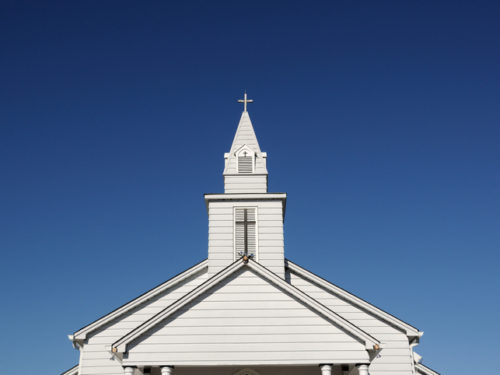 Uncategorized
Uncategorized
In light of the multiple thousands of denominations existing over and against Je...
 Uncategorized
Uncategorized
By: ECO Team
The notion of walkability has emerged in recent years as a significant factor in the housing market. More and more people want to live in a neighborhood in which they can walk from their home to a coffee shop, grocery store, and pub. Developers are increasingly thinking about issues of walkability in their projects and city planners are tending to support their efforts. This signifies a major shift from the automobile-oriented development that held sway for much of the 20th century. And this shift may have important implications for the church.
We can probably trace the walkability phenomenon back the development of Seaside Florida in 1981. The quaint and even nostalgic quality of this resort town makes it a bit hard to see its revolutionary significance. Seaside was developed outside of any existing municipal boundaries because most of its distinct features would have been illegal under any existing zoning codes. Seaside was privately financed because no lender was willing to finance a project that broke so many development orthodoxies.
So what was so revolutionary about Seaside? The houses were closer together and closer to the sidewalks than in a traditional suburban subdivision. Instead of having garage doors dominate the front, garages were placed in back (accessed by alleys) and the front of the house was reserved for prominent front doors, generous porches, and picture windows. Instead of clustering all of the homes into distinct areas based on size, detached houses and apartment buildings were built on the same block. The buildings were not arranged on a network of cul-de-sacs and feeder roads, instead they were on a fine-grained network of blocks with continuous sidewalks placed along every street. And commercial buildings (like coffee shops, grocery stores, and pubs) were allowed to exist within an easy walk of most of the houses.
In short, Seaside was a walkable town, not unlike thousands of small towns built in the decades before the post war suburban, automobile-oriented development took hold. Most of the ‘experts’ predicted failure for Seaside because they ‘knew’ people wanted more privacy and they wanted everything scaled for automobiles rather than pedestrians.
Well, during the next decade, as the housing market in Seaside consistently outperformed the traditional developments in the region, it demonstrated the experts were quite wrong.
Following Seaside’s success, new projects (under the heading of New Urbanism) began to emerge. Soon the planning community got on board and started allowing things like mixed-use zoning and they began reducing on-site parking requirements for new developments. These changes opened the way for infill projects in existing neighborhoods to get traction and more and more people began to rediscover the concept of a walkable neighborhood.
According to Jeff Speck, we are experiencing a major demographic shift concerning what kind of neighborhood people want to live in:
When selecting a community, nearly half of the public (47%) would prefer to live in a city or suburban neighborhood with a mix of houses, shops, and businesses… Only one in ten say they would prefer a suburban neighborhood with houses only (Jeff Speck, Walkable City North Point Press, 2013).
As more of our population gravitates towards walkable communities, where is the church in this conversation? Regrettably, it looks as if this may be one of those cultural phenomenon in which the mainstream church is a few decades behind the rest of the culture. I’ve spoken with a number of New Urbanist developers who wanted to see a church in the center of their walkable development, but had a hard time finding a buyer because denominational experts told them the lot size they were offering wouldn’t provide sufficient parking for a church plant. This attitude is beginning to change, but the notion of a massive building in the middle of at least a five-acre parking lot still seems to be the pervasive picture of success for many evangelical pastors.
This is unfortunate because the one thing many of these walkable communities need most desperately is a church. Neighborliness took a significant hit during our country’s recent automobile-oriented development phase. But it turns out when you place people in more traditional, human-oriented neighborhoods, they don’t automatically start acting more neighborly. It seems many people have forgotten how to connect with their neighbors or don’t understand why it might be important.
What’s needed is a group of people who are willing to look beyond their individual or family needs and take a few risks to build connections and seek the well being of their neighborhood.
I think this sounds a little like something God’s people are called to do.
As more and more of our fellow citizens pursue the goal of walkability, I hope they will find a Christian community who is willing to walk alongside of them and even encourage them to do their walking in the Spirit (Gal 5:16)
For a brief and entertaining orientation to the walkability phenomenon, I recommend watching this video.
 Uncategorized
Uncategorized
In light of the multiple thousands of denominations existing over and against Je...
 Uncategorized
Uncategorized
My first pastoral call was to the First Presbyterian Church of Winnfield, a litt...
 Uncategorized
Uncategorized
This semester, I’m teaching “The Holy Spirit and the Church.” Our primary textbo...